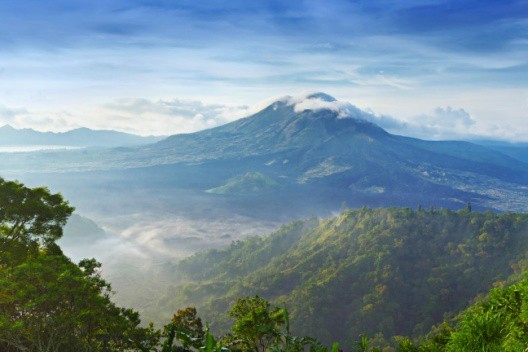
The U.S. Agency for International Development’s Low Emissions Asian Development program works with regional governments, businesses and institutions toward sustainable, low-carbon economic development, or “green growth,” across all economic sectors. The five-year program promotes regional cooperation to develop and implement low emission development strategies, improve greenhouse gas inventories and advance carbon markets in 12 countries: Bangladesh, Cambodia, China, India, Indonesia, Laos, Malaysia, Nepal, Papua New Guinea, the Philippines, Thailand and Vietnam.
IMPROVING GREENHOUSE GAS INVENTORIES AND ACCOUNTING
Many countries in Asia are vulnerable to the impacts of climate change and the region’s energy demand is predicted to double by 2030. Along with rising sea levels, changes in temperature and diminishing air quality, there will likely be adverse effects on food production, energy access and general health in a region that relies heavily on natural resources and agriculture. To avoid the worst impacts of climate change, the world must cut global greenhouse gas emissions in half by 2050. However, projections show that these emissions from energy use in Asia’s developing countries will increase from 33 percent of the world total in 2008 to 45 percent by 2030. Many Asian countries are now required to prepare national greenhouse gas emission inventories every two years. The project provides training on developing and managing national and corporate-level inventory systems and emission calculations consistent with international best practices. Accurate understanding of greenhouse gas emissions will enable governments, companies and other institutions to identify opportunities and find effective solutions to manage emissions, enhance removals and evaluate low-carbon growth strategies.
CONNECTING COMMUNITIES
The project established and serves as Secretariat of a voluntary network called the Asia Low Emission Development Strategies Partnership. There are now over 130 members from the public, private and non-governmental sectors. This regional partnership is working to advance the development of country-led and country-specific strategic plans to promote economic growth while reducing emissions – without causing trade-offs to other environmental pressures – in the Asia region.
CLOSING THE GENDER GAP
To reduce the gap in men and women’s education and training in environment issues, the project enhances economic opportunities for women to participate in markets related to greenhouse gas mitigation. It also includes women’s perspectives in all phases of designing and implementing greenhouse gas mitigation activities.
PARTNERS
The project is implemented by ICF International, which has extensive experience in the Asia-Pacific region providing professional services and technology solutions for energy, environment, transportation and other markets. Other partners include the Agriculture and Land Use Group, Alliance to Save Energy, Asian Institute of Technology, Engility Corporation, Greenhouse Gas Management Institute, Institute for Sustainable Communities, Nexant, Stockholm Environment Institute, and the Climate Registry.
Click here for the pdf version.







Comment
Make a general inquiry or suggest an improvement.